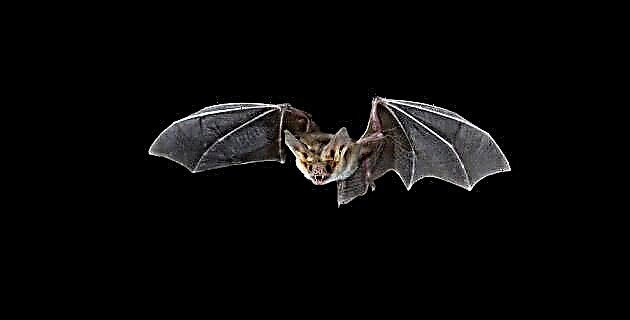
In this place, at dusk, a surprising spectacle takes place: from the mouth of the cave emerges a column formed by thousands of bats that fly with extraordinary precision.
In the caverns of Agua Blanca, at dusk, a surprising spectacle takes place. From the mouth of the cave emerges a column formed by thousands of bats that emit high-pitched screeches and fly with extraordinary precision. Not a single one hits against the branches and vines that hang at the entrance; they all act in unison, rising like a black cloud towards twilight.
The fantastic scene lasts about five minutes and heralds the awakening of countless creatures that inhabit the jungle, among them, bats, one of the most fascinating, amazing and least known animals to man.
Bats are the only flying mammals on Earth and the oldest; their origin dates back to the Eocene, a period of the Tertiary era that lasted from 56 to 37 million years, and they are classified into two suborders, Megachiroptera and Microchiroptera.
The second group inhabits the American continent, which includes Mexican bats, with a small to medium size, with wings ranging from 20 to 90 cm in length, weighing from five to 70 grams and nocturnal habits. All species in this group have the ability to echolocate and in some the sense of sight and smell is developed to a greater or lesser degree.
Due to the climatic and biotic characteristics of our country, the number of Mexican species is high: 137 distributed mainly in tropical and subtropical regions, although there are also in arid and desert areas. This means that we have almost a fifth of the 761 existing species in the world.
Echolocation, the ideal system
Many people believe that bats are a kind of flying mouse, and although their name means blind mouse, they are neither one nor the other. They are mammals, that is, warm-blooded animals with their bodies covered in hair and that suckle their young. There are all types, small and medium, with elongated and pointed snouts, flat faces and wrinkled noses, with short ears and small eyes, silky and shaggy fur, black, brown, gray and even orange, depending on the color. species and type of food they eat. Despite their differences, they all share a characteristic that makes them unique: their echolocation system.
When bats fly, they have the most advanced sound system in the world, far superior to any used by combat aircraft; They do this by screeching during the flight. The signal travels through space, bounces off solid objects, and returns to your ears as an echo, allowing you to identify whether it is a rock, a tree, an insect, or an object as imperceptible as a human hair.
Thanks to this and their wings, which are actually hands with long fingers joined by a thin skin membrane, they move smoothly through the air through very tight spaces or in open fields, where they reach speeds of up to 100 km per hour. and heights of three thousand meters.
Contrary to popular belief, bats are very docile and intelligent animals that live with us almost daily, which we can see when we see them in parks, cinemas, gardens, streets and squares of the city hunting insects in the dark. They are far from being the terrifying and bloodthirsty creatures that fiction has made of them, and the following data will serve to prove it.
Of the 137 Mexican species, 70% are insectivores, 17% feed on fruits, 9% on nectar and pollen, and of the remaining 4% –which is made up of six species– three feed on small vertebrates and the other three are the called vampires, which feed on the blood of their prey and attack primarily birds and cattle.
Throughout the Republic
Bats live throughout the country and are most abundant in the tropics, where they inhabit hollow trees, crevices, abandoned mines, and caves. In the latter they are found in significant numbers, from a few thousand to millions of individuals.
How do they live in caves? To find out and learn a little more about them, we entered the La Diaclasa cave, in the Agua Blanca State Park, in Tabasco, where a large colony lives.
The bats have their refuge in the middle part of the cave, from which an intense ammonia smell emanates from the excrement deposited on the floor of the gallery. To get there, we go through a low and narrow tunnel, taking care not to get splashed with a stream of guano. Beyond, at 20 m, the passage opens into a chamber and a fantastic and hallucinatory vision appears; thousands of bats hang upside down on the walls and vault. Although it is risky to give a figure, we estimate that there are at least one hundred thousand individuals, forming true clusters.
Because they are very susceptible to disturbances, we move slowly when taking pictures. Adult and young bats live here, and since it is spring many newborns. In general, each female has one young per litter per year, although species that present two or three have been reported; the lactation period lasts from two to six months, during which time mothers go out to feed their children firmly attached to the breast. When the weight of the young is an impediment to flight, they leave them in charge of other females who lavish the necessary care. An amazing fact is that when returning to the nest and without hesitation, the mother can find her child among thousands of individuals.
This habitat provides bats with rest, a suitable place for reproduction, and protects them from predators. Due to their nocturnal habits, during the day they remain immobile, asleep upside down, clinging to the rock with their legs, in a posture that is natural to them. At dusk the colony becomes active and they leave the cave in search of food.
Those of Agua Blanca
These bats are from the family Vespertilionidae, which groups insectivorous species that live 30 years or more. This and others play a very important role in maintaining biodiversity, since they are responsible for dispersing large amounts of seeds from the fruits they consume, they pollinate the flowers of trees and plants that otherwise would never bear fruit, such as mango and guava, wild banana, sapote, and pepper, among many others. As if that were not enough, the Agua Blanca colony devours about a ton of insects every night, which contributes to regulating its population for the benefit of agriculture.
In ancient times, bats occupied a special place in the religious thought of Mesoamerican cultures. The Mayans called him tzotz and represented him in urns, incense boxes, vases and multiple objects, just like the Zapotecs, who considered him one of their most important gods. For the Nahuas of Guerrero the bat was the messenger of the gods, created by Quetzalcóatl by spilling his seed on a stone, while for the Aztecs it was a god of the underworld, described in the codices as Tlacatzinacantli, the bat man. With the arrival of the Spanish, the cult of these animals disappeared to give rise to a series of myths and legends that were not edifying, but there is still an ethnic group that still reveres it; the Tzotziles of Chiapas, whose name means bat-men.
Our ignorance about bats and the destruction of their habitats - mainly the jungles - represent a risk for the survival of these extraordinary animals, and although the Mexican government has already declared four species as threatened and 28 as rare, a greater effort is needed to protect them. Only then will we be sure to see them fly, as every night, through the skies of Mexico.











